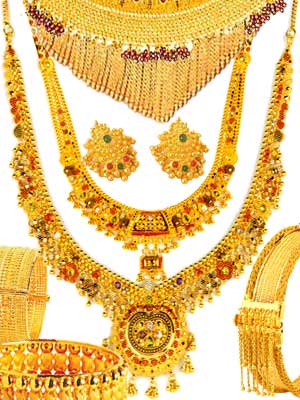



Traditional Indian heritage is incomplete with out Jewellery. Jewellery in India is popular with its different styles in different states. Every lady loves jewellery in some way of other. Some like traditional, some like fusion, some like modern. I think traditional Indian jewellary represents our culture, so we should give priority to traditional indian style.
It is a very good business in India. Every Indian likes to have some gold for his/ her family. This can be in the form of Jewellery. So it is the basic requirement of the Indian customers. Common people like to purchase jewellary from a normal jewellar, but now Middle Class families are purchasing branded jewellary.
History :
The Indian subcontinent has the longest continuous legacy of jewellery making anywhere since Ramayana and Mahabharata times. While Western traditions were heavily influenced by waxing and waning empires, India enjoyed a continuous development of art forms for some 5000 years.
One of the first to start jewellery making were the peoples of the Indus Valley Civilization. By 1,500 BC the peoples of the Indus Valley were creating gold earrings and necklaces, bead necklaces and metallic bangles. Before 2,100 BC, prior to the period when metals were widely used, the largest jewellery trade in the Indus Valley region was the bead trade.
Jewellery in the Indus Valley was worn predominantly by females, who wore numerous clay or shell bracelets on their wrists. They were often shaped like doughnuts and painted black. Over time, clay bangles were discarded for more durable ones. In India today, bangles are made out of metal or glass. Other pieces that women frequently wore were thin bands of gold that would be worn on the forehead, earrings, primitive brooches, chokers and gold rings. Although women wore jewellery the most, some men in the Indus Valley wore beads. Small beads were often crafted to be placed in men and women’s hair.
India was the first country to mine Diamonds, with some mines dating back to 296 BC. India traded the diamonds, realising their valuable qualities.

Keep reading…





